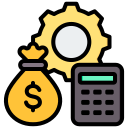
Creating a Business Expense Plan for Freelancers
Build a resilient, flexible expense plan designed for the freelance life. Today’s chosen theme: Creating a Business Expense Plan for Freelancers—practical steps, real stories, and prompts to help you take confident control of your money.
Start with the Foundations: What Your Expense Plan Must Cover
List fixed costs like software subscriptions, insurance, and coworking fees, then separate variable costs such as travel, contractors, and equipment. This clarity anchors your expense plan, letting you predict obligations while adapting gracefully when projects surge or stall.
Start with the Foundations: What Your Expense Plan Must Cover
Open a dedicated business account and card to prevent fuzzy boundaries. When every business expense flows through one clean channel, your plan becomes reliable, reports become simpler, and tax preparation stops feeling like detective work on a messy timeline.
Start with the Foundations: What Your Expense Plan Must Cover
Assign monthly spending targets by category, based on your realistic income baseline. Targets turn vague intentions into measurable benchmarks, guiding decisions about tools, training, and travel so your expense plan supports growth without quietly draining your cash flow.
Tracking That Actually Sticks
01
Whether you love spreadsheets, Notion, or accounting apps like Wave and QuickBooks, consistency beats complexity. Your expense plan thrives when you record transactions quickly, reconcile weekly, and keep categories stable enough to reveal meaningful patterns over months.
02
Use tags like “software,” “education,” and “marketing” so your plan shows where money truly works for you. Precise tagging exposes waste, highlights profitable investments, and makes quarterly reviews frictionless, helping you pivot fast when projects change shape or scale.
03
Freelancer Mia started a Friday money date, reviewing receipts and tagging line items. Within two months, her plan revealed duplicate tools and a languishing subscription, trimming expenses by eighteen percent—and freeing budget for a course that landed two higher-value clients.
Budgeting Methods Built for Freelancers’ Reality
Give every dollar a job, even when income fluctuates. Assign funds first to taxes and essentials, then to growth and discretionary categories. This method forces your expense plan to reflect priorities, preventing idle cash from escaping into unhelpful, unplanned purchases.

Taxes: Plan Like a Pro, Sleep Better
Auto-Set Aside a Tax Percentage
Transfer a fixed percentage from every payment to a separate tax account—many freelancers choose twenty-five to thirty percent, depending on local rules. Treat it as non-negotiable within your expense plan, so tax deadlines become routine, not a stressful scramble.
Know What’s Deductible
Capture legitimate deductions like software, domain fees, professional education, portions of home office utilities, and business travel. Your expense plan should catalogue these clearly, helping you claim fairly while staying compliant. Always confirm details with local regulations or a qualified professional.
Keep Audit-Ready Records
Store receipts, invoices, and contracts alongside transactions. A tidy document trail turns your expense plan into evidence: categorized, dated, and justified. When everything matches bank statements, you gain confidence, credibility, and smoother conversations with any accountant or authority.
Forecasting: Turning Uncertainty into a Plan
Calculate three- and six-month average revenue, then budget next month’s expenses using the lower figure. This conservative approach prevents overcommitting, keeps your plan realistic, and helps you maintain momentum even when a big invoice pays later than expected.


Optimize Spending Without Starving Your Business
List every recurring tool and its business outcome. Cancel duplicates, downgrade tiers, or request loyalty discounts. One designer saved forty-two dollars monthly after a ten-minute chat—small wins compounded through your plan can finance better training or essential hardware upgrades.
